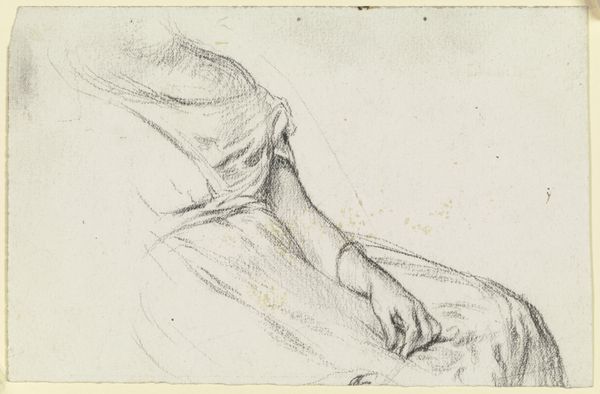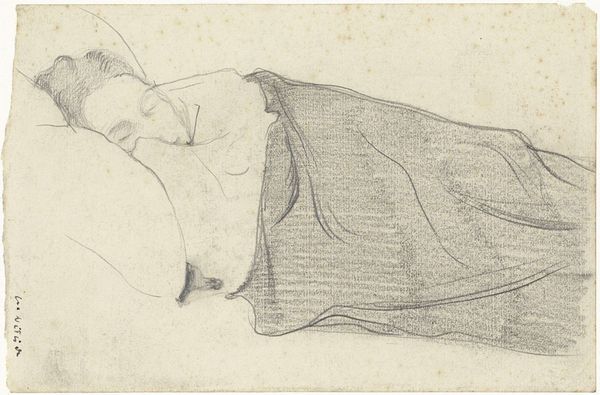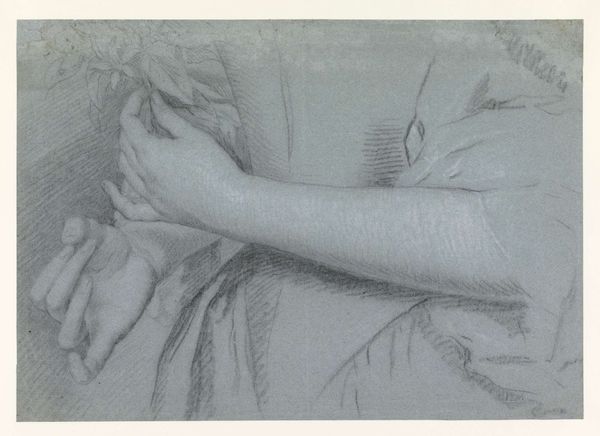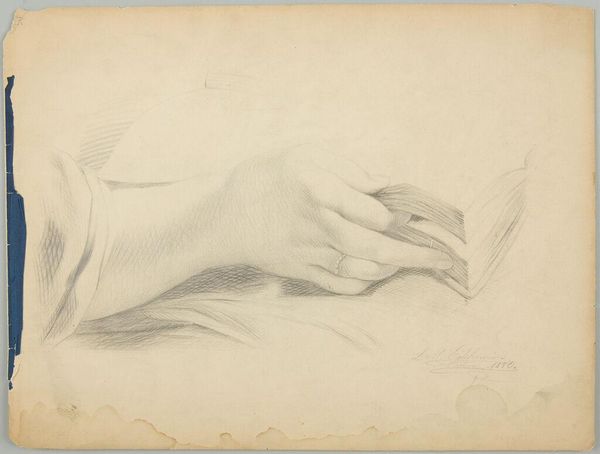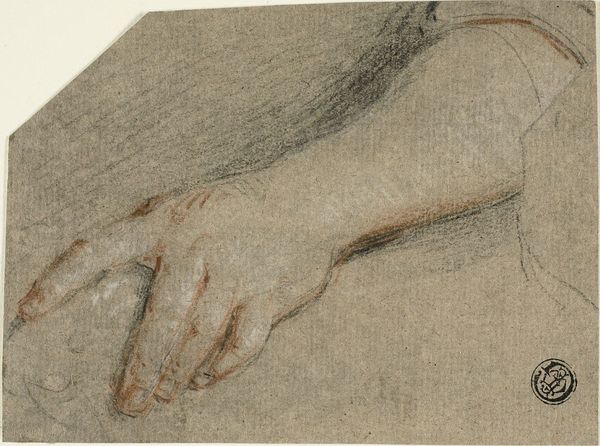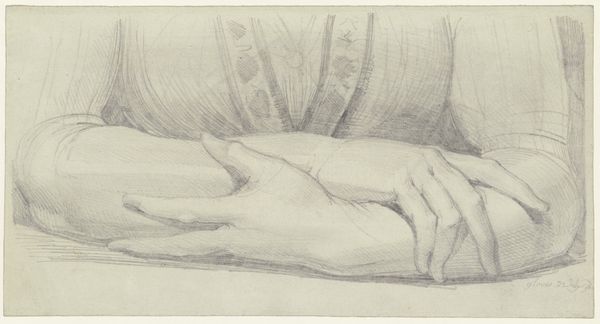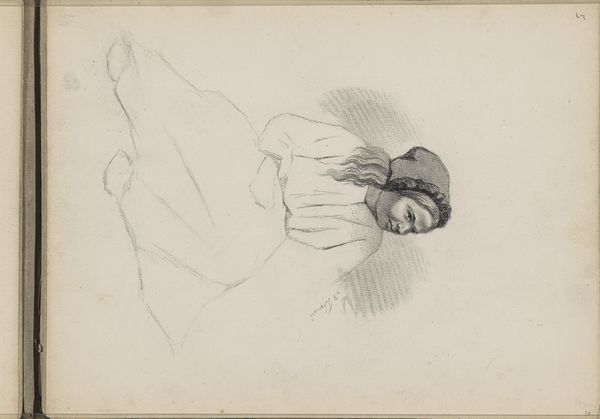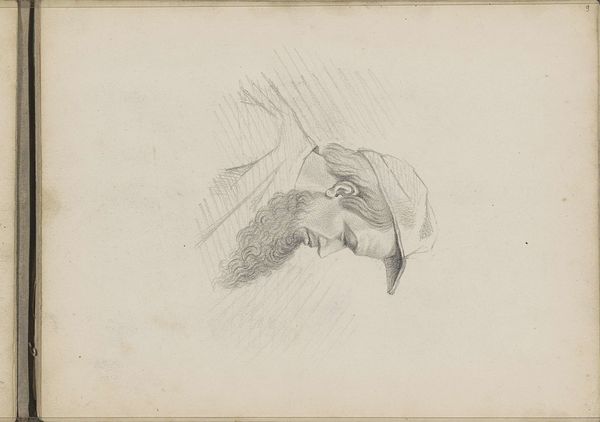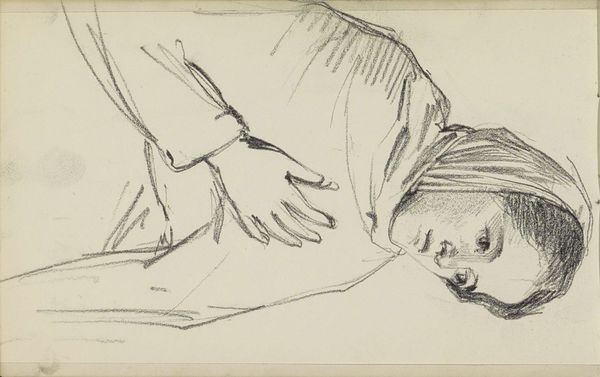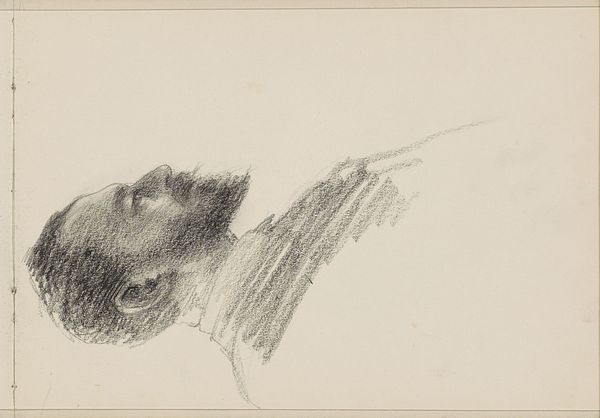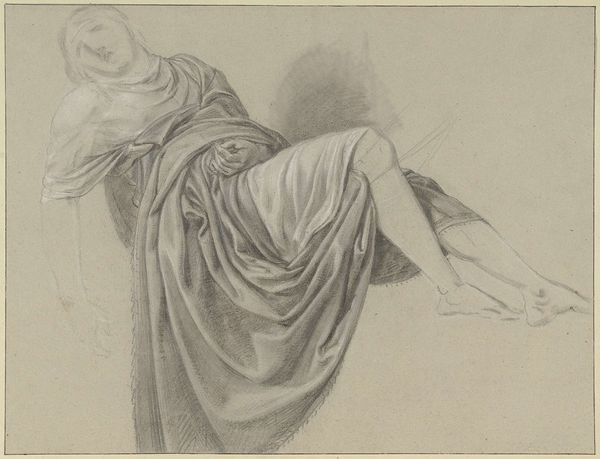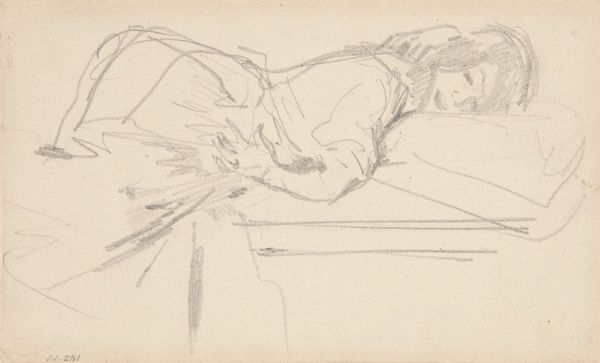
drawing, pencil
#
portrait
#
drawing
#
pencil drawing
#
pencil
#
portrait drawing
#
academic-art
#
portrait art
Dimensions: height 266 mm, width 359 mm
Copyright: Rijks Museum: Open Domain
Curator: Here we have Anthony van Dyck's "Studie van een hand met onderarm, stekend uit een mouw", a drawing housed here at the Rijksmuseum and thought to be made sometime between 1603 and 1662. It's rendered in pencil. What's your initial reaction to this piece? Editor: The precision! It strikes me as so delicate, so carefully observed. There's something almost melancholic about the hand extending from that draped sleeve, the light and shadow playing across the folds. Curator: Absolutely. The mastery over a humble material like pencil is astounding. Look at how he creates such dimensionality and texture with subtle variations in pressure. For me, it speaks to the artist's intense study of anatomy and fabric—it’s clearly an exercise meant to refine his skills in rendering realistic forms. Van Dyck must have labored over these drawings as crucial stages to making credible paintings. Editor: And isn’t it interesting that a single hand can be so evocative? In iconographic terms, hands frequently represent skill, action, or blessing. This extended hand, neither grasping nor quite offering, presents ambiguity, doesn’t it? Curator: Yes, precisely. Consider the socio-economic context; the fine linen of the sleeve and delicacy of the hand indicate nobility. But it remains just a study—a glimpse into the work required of artistry at the time and those commissioning work. Editor: The drawing hints, too, at larger traditions—art history and art creation is passed from artist to artist. Even today we still copy master's works. Van Dyck, the creator, is visible in this art. Curator: True. It connects him to a broader artistic lineage while also highlighting the specific craftsmanship involved in creating images. The finished paintings wouldn't be possible without such in-depth exploration. Editor: Indeed. It's fascinating how something so focused can suggest such grand, overarching stories. Curator: Ultimately, Van Dyck reveals labor while pointing toward the hand’s layered meanings throughout art history and beyond. Editor: A deceptively simple study.
Comments
No comments
Be the first to comment and join the conversation on the ultimate creative platform.
